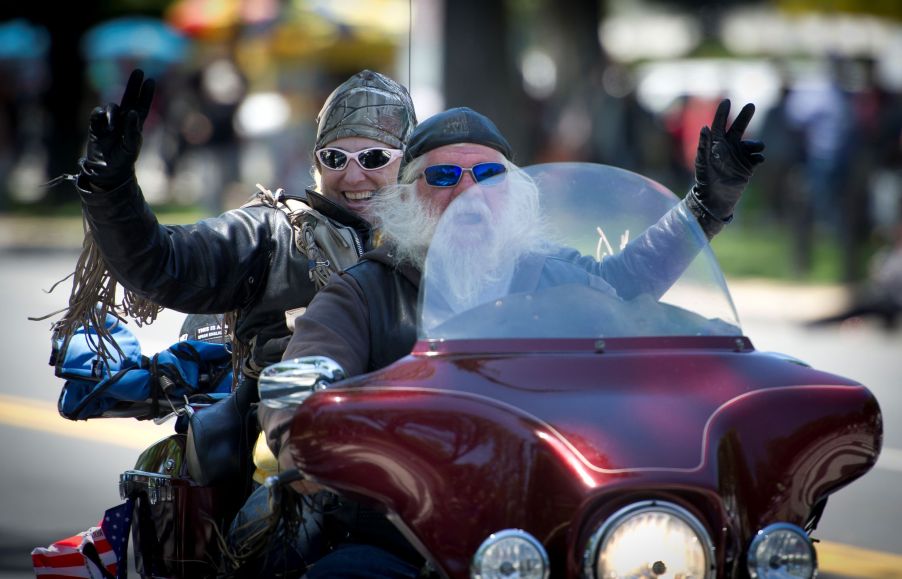
Why Do Motorcycle Riders Wave To Each Other?
It used to be that a black leather jacket was the traditional motorcycle rider calling card. Not just to other people, but to fellow riders as well. But while a Schott Perfecto is no longer de rigueur, the motorcycling community is still all about camaraderie. And part of expressing it is with the ‘motorcycle wave.’
What is the ‘motorcycle wave’?

The motorcycle wave takes a few different forms. Some riders do a full-on wave. Others do a thumbs-up or a raised loose fist. The version I’m most familiar with resembles an upside-down peace sign. That’s the most common variant, MotoSport reports. But why do riders do it?
The two-finger motorcycle wave is often a way of telling your fellow riders to stay safe, BikeBandit explains. Those two fingers pointed down symbolize keeping your bike’s two wheels on the ground. But regardless of the specific variant, the wave is a way to express solidarity with other riders, Cycle World explains. And it’s typically done, at least in the US, with the left hand.
The motorcycle wave isn’t necessarily a universal concept, MotorBikeWriter reports. In countries that ride on the left side of the road, such as Australia, you’d have to use your right hand to wave. And that means coming off the throttle. So, sometimes, a nod replaces the wave.
As for how the motorcycle wave started, there are several possibilities, RideApart reports. Some say that two of the Harley-Davidson co-founders waved to each other, and it caught on from there, BeginnerRiders reports. Another possible origin story claims the wave originated as a sign of respect for WWII veterans, many of whom rode bikes after the war.
Yet another possibility is that it’s a variant of either the V-for-victory or the peace sign. Though it might also stem from the ‘you meet the nicest people’ Honda ads from the ‘60s and ‘70s, which often featured friendly, waving riders and passengers.
Regardless of its origin, though, today the motorcycle wave is an established part of rider culture.
The wave is just one of several motorcycle hand signals
Whichever wave variant you use, know that it’s not the only hand signal used by motorcycle riders. The earliest bikes didn’t have brake lights; and even into the ‘60s, turn signals weren’t necessarily standard equipment. As a result, motorcycle riders depended on specific hand signals to let other road-users know if they were stopping or turning.
However, even though modern motorcycles have turn signals and brake lights, knowing your hand signals is still important. Staying visible is absolutely vital for bike riders, and how can you do that if your lights are broken? Also, although motorcycle helmet communication systems are available, not every rider has one, EagleRider points out. Hand signals help keep everyone in the loop, Cycle World explains.
If you’re riding solo, the most important hand signals are for indicating turns, adjusting speed, and pointing out hazards, AutoWise reports. These, along with other helpful motorcycle hand signals, are shown above. And they’re all performed with the left hand because, as we stated earlier, the right hand controls the throttle.
There are times when you need both hands on the handlebar

It’s worth pointing out that there are times when you shouldn’t return or give a motorcycle wave. Typically, that’s because you’re either accelerating, braking or turning.
The first two instances are about control. Namely, you want to accelerate and brake in a straight line, The Drive explains. Taking a hand off of the handlebar(s) interferes with that.
As for turning, doing a motorcycle wave interferes with counter-steering. To turn left on a bike, you have to push the left grip forward and pull the right one back, Cycle World explains. This is the opposite of what you do in a car, for physics-related reasons tied to motorcycle design, RideApart explains. But it’s safe to say, you can’t really counter-steer with one hand.
Follow more updates from MotorBiscuit on our Facebook page.


